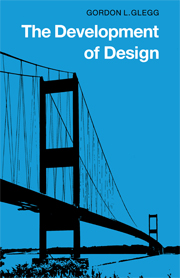2 - The basic idea — indirect tests
Published online by Cambridge University Press: 07 September 2010
Summary
The indirect test is not an extension of the direct, but its inverse. The direct test had practice but no observable principles. The indirect is all principles but no observable practice. The direct was active but dumb; the indirect chatters away but does nothing. The ventriloquist and his doll have swopped jobs.
Take an almost ludicrously simple example and imagine you have a new idea that involves a weight suspended on a tension spring. The weight, once deflected, moves up and down. You want to find the time cycle of this oscillation; so you measure it directly with a stop-watch.
But you could find the same answer indirectly. If you found out, in principle, how much the spring extended per unit mass, you could calculate the natural frequency with a pocket calculator. But let us assume you use a slide rule. The whole problem would be now represented indirectly by distances on the scales of your slide rule, and the answer would also be represented by a distance on it, which would in turn have to be interpreted back into terms of real time. The two words ‘represent’ and ‘interpret’ are the twin towers from which all indirect tests are hung.
The first advantage of the indirect test is that it can escape from the dictatorship of time. Our lives are inevitably and unavoidably dominated by the old man with a scythe, but an indirect test can answer back. It can save time, stop it, manipulate it or reverse it.
- Type
- Chapter
- Information
- The Development of Design , pp. 29 - 33Publisher: Cambridge University PressPrint publication year: 1981

